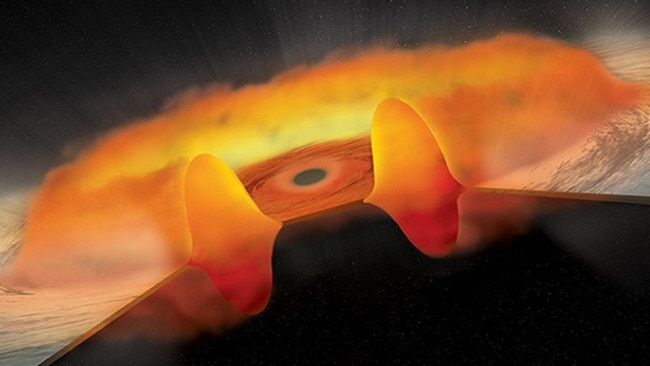NASA’s Chandra Observatory uncovers a new group of super ravenous black holes
SCIENTISTS believe thick, doughnut-shaped discs of gas and dust are hiding gigantic black holes in space that are growing at an extraordinarily rapid rate.

AN unusually voracious group of giant black holes could be gorging on the outer limits of the cosmos, according to a discovery from NASA’s Chandra X-ray Observatory.
The breakthrough suggests some black holes are capable of devouring matter much faster than scientists previously thought.
“Even for famously prodigious consumers of material, these huge black holes appear to be dining at enormous rates, at least five to ten times faster than typical [black holes],” said Bin Luo of Pennsylvania State University, who led the study.
Astronomers have known for some time that supermassive black holes, with masses ranging from millions to billions of times the mass of the Sun, can guzzle huge quantities of gas and dust captured by their gravitational pull.
As the matter falls towards these black holes, it usually glows with such brilliance that it can be seen billions of light years away. Astronomers call these black holes quasars.

But Luo and his colleagues noticed 51 quasars located at a distance between about 5 billion and 11.5 billion light years from Earth that had unusually dull emissions.
The scientists believe a thick, doughnut-shaped disc of gas and dust cloak theses quasars, stifling the X-rays that would otherwise escape.
Luo thinks these ‘thick-disc’ quasars are harbouring gigantic black holes that are growing at an extraordinarily rapid rate.
The discovery might offer a glimpse into the very beginnings of the universe and how black holes were able to form so soon after the big bang.
As the BBC documentary below shows, scientists have long been baffled by the unpredictable behaviour of black holes and their seemingly boundless power to consume entire star systems.



